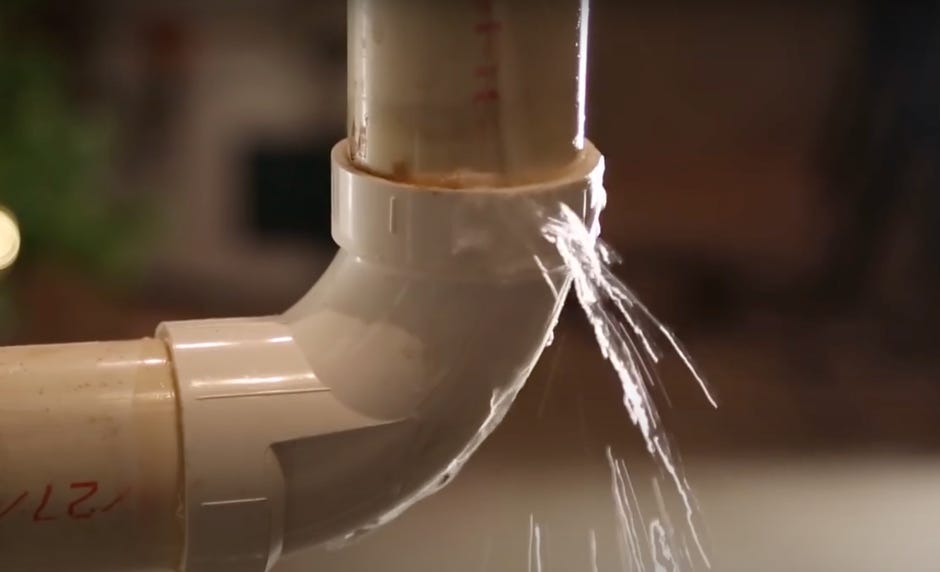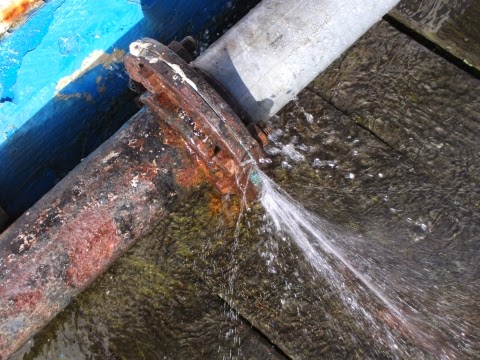Stop the Flood: Methods for Spotting and also Taking Care Of Burst Pipes
Stop the Flood: Methods for Spotting and also Taking Care Of Burst Pipes
Blog Article
What are your insights and beliefs on How to Install and Connect a New Dishwasher?

A ruptured pipe is a major emergency; you can only stand as you view water you pay very much to rejoin with the planet. In even worse instances, you see a swimming pool on your cooking area floor, which is a fantastic trip hazard, especially if you have youngsters around. If the pipeline that burst remained in your walls, bad news: you may need to repaint that entire area.
How can a calamity like a ruptured pipeline be protected against and also taken care of? Well, by paying attention to your specialist emergency plumbing professionals as well as complying with these policies.
Exactly how do I understand when my pipes have burst?
Varying water pressures
Pipes do not just burst in a day. You may have seen that your cooking area faucet or shower doesn't run right away when you turn the faucet. It may pause for a couple of seconds and then blast you with more pressure than common.
In various other circumstances, the water may seem normal at first, after that decrease in pressure after a few seconds.
Damp wall surfaces as well as water stains
Before a pipeline ruptureds, it will leak, most times. If this relentless dripping goes undetected, the leak might graduate into a vast tear in your pipe. One easy way to prevent this emergency is to watch out for wet walls advertisement water spots. These water stains will certainly lead you right to the leakage.
Puddles under pipes and sinks
When a pipeline bursts, the outflow creates a pool. It may show up that the pool is growing in dimension, as well as no matter the amount of times you wipe the puddle, in a couple of minutes, there's another one waiting to be cleansed. Frequently, you might not be able to map the pool to any noticeable pipes. This is a sign to call a specialist plumber.
Untraceable leaking sounds
Pipeline bursts can take place in the most undesirable locations, like within concrete, inside walls, or under sinks. When your house goes silent, you might be able to listen to an annoyingly relentless leaking sound. Even after you have actually inspected your shower head and kitchen area tap, the trickling might continue.
Dear visitor, the dripping might be coming from a pipeline inside your walls. There isn't much you can do regarding that, other than tell a specialist plumber.
Turn off the Water
When water ices up, it broadens in quantity by regarding 9 percent. And also it expands with significant force: The stress inside pipes may go from 40 extra pounds per square inch to 40,000 psi! No pipe can hold that much stress, so it bursts. The break may take place where the ice forms, however more frequently, it happens where water pressure discovers a weak point in the pipe. That might be inches or even feet from the frozen location. Find the water shutoff valve as well as switch off the water to prevent even more damages. You might likewise require to turn off the power as well, depending upon where the leakages takes place and exactly how large it is.
Contaminated water
Lots of people presume a ruptured pipe is a one-way outlet. Fairly the contrary. As water flows out of the hole or gouge in your plumbing system, impurities locate their way in.
Your water may be infected from the resource, so if you can, check if your water storage tank has any kind of troubles. However, if your drinking water is provided and also purified by the city government, you ought to call your plumber promptly if you see or scent anything funny in your water.
What do I do when I find a burst pipeline?
Your water meter will certainly remain to run even while your water wastes. To reduce your losses, discover the major controls and also transform the supply off. The water mains are an above-ground structure at the edge of your residential property.
WHAT IS A SLAB LEAK?
A slab leak is an industry term for a leak within the waterline piping below a home’s concrete floor, and they can occur in homes and buildings of all ages. Broken water pipes under your home can cause irreparable damage to foundations and cost tens of thousands of dollars to repair. The extent of the damage can be exacerbated by certain types of soils (expansive soils) which absorb greater quantities of water and expand, often causing slabs to lift and crack (see our article The best ways to repair sewer pipes and collapsed drains under slabs).
The more quickly an underground water or sewer leak is detected and repaired, the lower the final cost is likely to be, so being aware of the early signs of a slab leak can save homeowners from potentially devastating consequences.
SIGNS OF A WATER LEAK UNDER THE HOUSE
Wet areas of grass beside the home’s exterior walls Wet or damp patches of carpet or moisture on internal flooring Mildew or mould under carpets, rugs or at the base of drapes A musty odour in certain rooms The sound of running or rushing water even when all outlets are turned off (you may have to get down and put your ear against the floor to hear such a leak, which indicates a leak in the pipes entering the house) Warm spots on the floor (walk the floor without shoes or socks in the line from the hot water system to relevant outlets as this can indicate a leak in a hot water pipe) Unexplained increases in your water bill Low water pressure Rising damp on walls when there has been no significant rain ESTABLISH THE LOCATION OF THE LEAK
The first step is to establish where the leak(s) are located. If you see or hear water in one particular section of your floor, you might be able to take an educated guess, but there is no guarantee the offending pipe will be located right beneath the wet patch you’ve noticed on your carpet. Water is notorious for pooling in empty or low-lying cavities so the actual break or crack could be some distance away. You won’t be popular if you assure your wife you can repair the pipe yourself and cut up the concrete in her new bathroom floor only to find the water’s coming from a leaking join two metres along the line.
Finding the exact location of leaking pipes beneath a house slab usually requires the help of a professional with specialised listening devices, CCTV cameras and other leak detection equipment. To detect leaks in the small pipes that bring pressurised water to your home, the water is often turned off and air is pumped into the lines to force out the remaining water. This allows the plumber to listen for escaping air from the damaged pipe.
ARM YOURSELF WITH NUMEROUS QUOTES AND INFORMATION
Once the presence and location of a leak have been confirmed, the next step is the repair. If the leak is outside the perimeter of the slab or near the edge, and you know a bit about basic DIY plumbing, you might be lucky enough to be able to reach and repair it yourself without too much trouble.
But if the leak is deep under your house slab, you would be best advised to consider a professional repair to ensure the structural integrity and insurance cover of your home are not compromised. You should get a range of quotes from different types of pipe repairers, and you should ask each of them as many questions as possible so they can advise on the pros and cons of their particular repair strategy in relation to your particular job.
Just like doctors, whilst all plumbers know the basics, they’re not all experts in all things plumbing. Some specialise in new builds, some in water supply systems, some focus on gas fitting or roofing and some deal in mechanical services. So if you need to repair drain pipes under your house slab, you need more than just an everyday, all-round plumber who might only deal with similar under-slab leaks a handful of times each year. You need to ensure you deal with tradespeople with established reputations as experts in things like pipe relining, drainage and pipe clearing under slabs.
When you are talking to each of the people quoting the job, pick their brains about possible options. For example, if the tradesperson quoting is a specialist in CIPP relining methods, ask them whether a traditional excavation and replacement might work better for you, and if not why. This way you will get to hear all the potential negatives of each strategy, which will equip you to ask better questions and make a more informed final decision. Once you have all the information and options, you are ready to consider which repair strategy is best for you.
DECIDE ON THE BEST REPAIR STRATEGY FOR YOUR SITUATION
There is no ‘one-size-fits-all’ best option for repairing pipes under a slab. If you’ve got a holiday home at the beach you can hang out in for a month, for example, or if you were already considering a complete kitchen and bathroom make-over, then excavating and replacing all your water and sewer pipes might not be such a bad thing. Carefully consider everything you’ve learned, taking into account all the additional costs for things like temporary accommodation you might need, having to buy takeaway for two weeks or re-laying the expensive new floor tiles your wife is likely to pick out. And don’t forget to factor in less tangible elements, like the joy of living with your mother-in-law for a month. This way you will avoid any unpleasant surprises when you add up the total costs after the job is done.
https://nuflow.net/how-to-fix-a-broken-pipe-under-the-house/

I hope you enjoyed our topic about How to Prepare for Your Dishwasher Installation. Thanks a ton for spending some time to browse our post. Enjoyed reading our blog posting? Please share it. Help another person find it. I am grateful for your time. Kindly come by our site back soon.
View More
Report this page